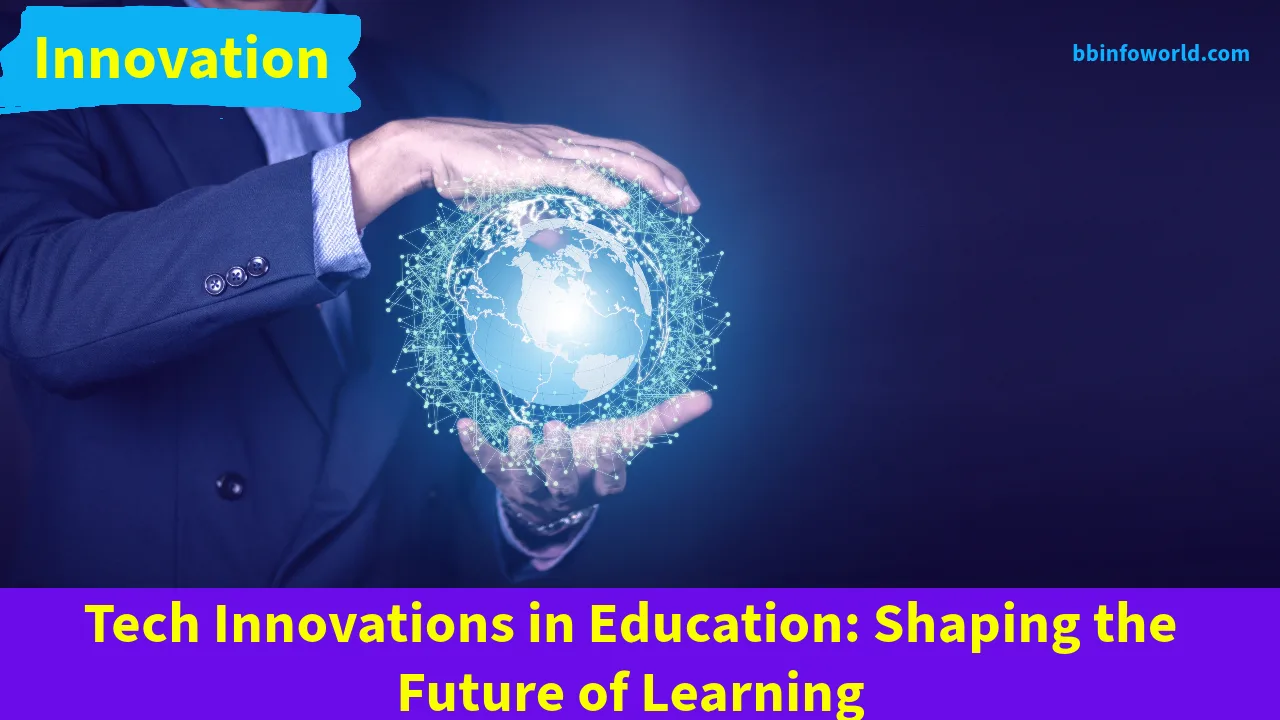
Tech Innovations in Education: Shaping the Future of Learning
Introduction:
In recent years, the intersection of technology and education has led to a remarkable transformation in the way we learn and teach. From virtual classrooms to personalized learning experiences, tech innovations have reshaped the educational landscape, offering unprecedented opportunities for students, educators, and institutions alike. In this article, we’ll explore how these tech innovations are shaping the future of learning and revolutionizing the traditional education system.
1. Personalized Learning:
One of the most significant innovations is the concept of personalized learning. Adaptive learning platforms and algorithms analyze individual student progress and adapt the curriculum to their strengths, weaknesses, and learning pace. This tailored approach ensures that each student receives the support they need, promoting better understanding and retention of the material.
2. Online Learning Platforms:
The rise of online learning platforms has democratized education, making it accessible to learners of all ages and backgrounds. Whether it’s MOOCs (Massive Open Online Courses) or specialized platforms, learners can access a wide range of subjects and courses from renowned institutions and instructors worldwide.
3. Virtual Reality (VR) and Augmented Reality (AR):
Immersive technologies like VR and AR have brought a new dimension to education. Students can explore historical sites, delve into complex scientific concepts, or participate in interactive simulations, enhancing their understanding by experiencing rather than just reading about it.
4. Gamification:
Gamification integrates game elements into the learning process, making education more engaging and enjoyable. Students earn rewards, progress through levels, and compete with peers, turning education into a dynamic and interactive experience.
5. AI-Powered Education:
Artificial Intelligence (AI) is revolutionizing education by providing intelligent tutoring systems, automated grading, and predictive analytics. AI algorithms analyze student behavior and performance data to offer personalized recommendations and interventions.
6. Flipped Classroom Model:
The traditional classroom dynamic has been redefined with the flipped classroom model. Students access lectures and course materials online before class, allowing in-person sessions to focus on discussions, problem-solving, and collaborative projects.
7. Digital Assessments and E-Portfolios:
Technology has transformed assessment methods. Digital assessments, quizzes, and exams provide instant feedback, while e-portfolios allow students to showcase their work, skills, and achievements in an organized digital format.
8. Remote and Hybrid Learning:
Recent global events have accelerated the adoption of remote and hybrid learning models. Virtual classrooms and video conferencing tools enable students to participate in classes from anywhere, breaking down geographical barriers.
9. Interactive E-Books and Multimedia Content:
Traditional textbooks are evolving into interactive e-books enriched with multimedia elements such as videos, animations, and interactive diagrams, enhancing the learning experience and catering to different learning styles.
10. Global Collaboration:
Technology enables students to connect and collaborate with peers, educators, and experts globally. Virtual collaborations break down cultural barriers, expose students to diverse perspectives, and foster a global mindset.
Conclusion:
The tech innovations in education are reshaping the way we learn and teach, opening up new possibilities for personalized, engaging, and flexible education. As these innovations continue to evolve, they hold the potential to create a future of learning that is dynamic, inclusive, and adaptive to the needs of learners worldwide. By harnessing the power of technology, we can bridge gaps, ignite curiosity, and equip the next generation with the skills they need to succeed in an ever-changing world.



